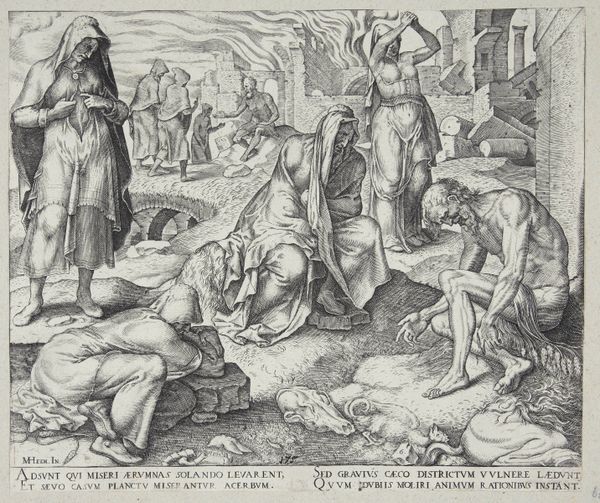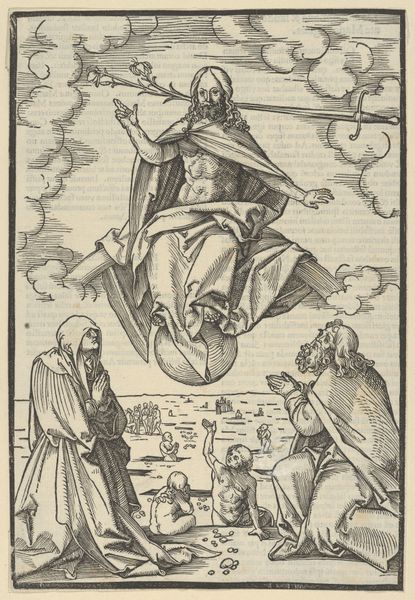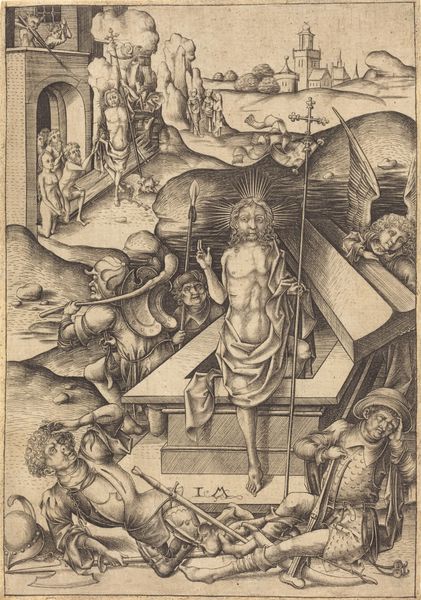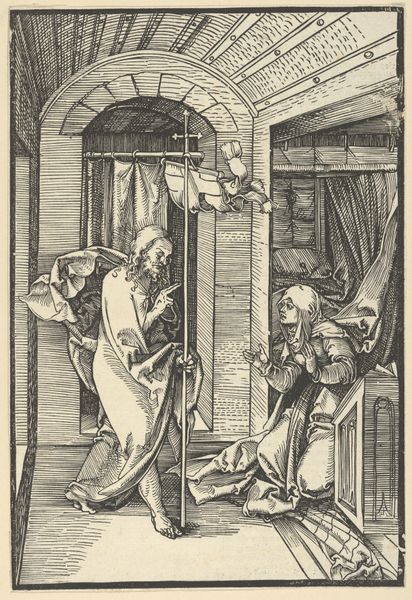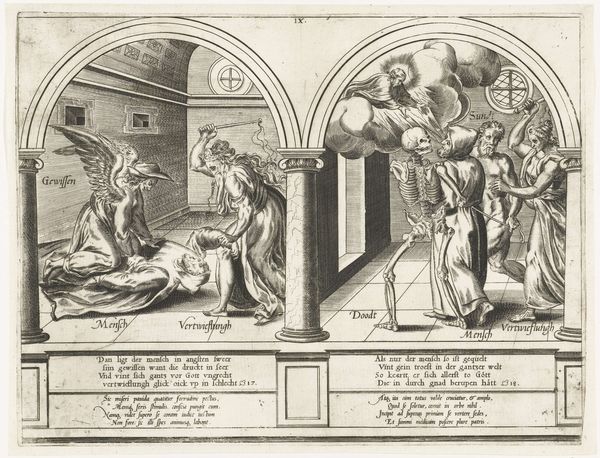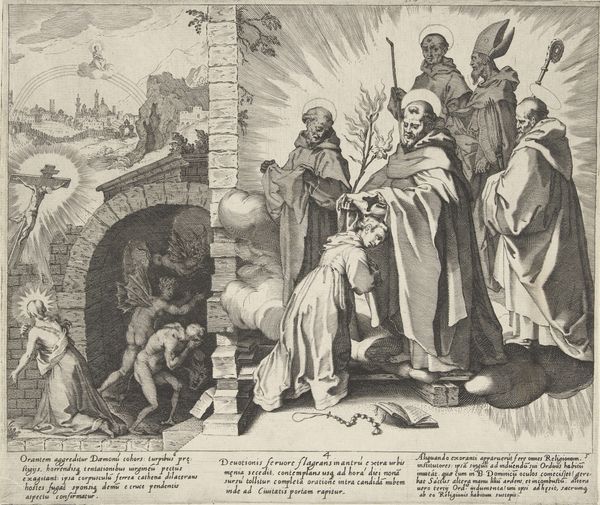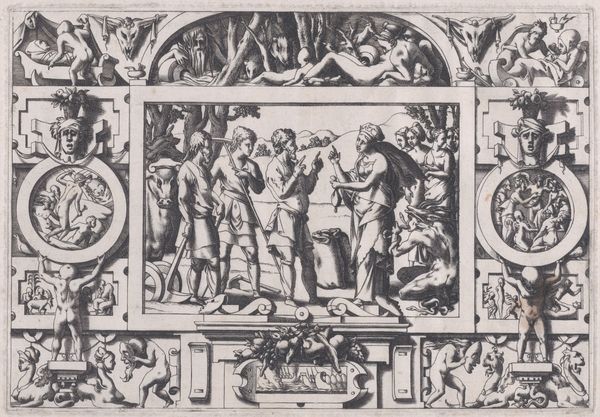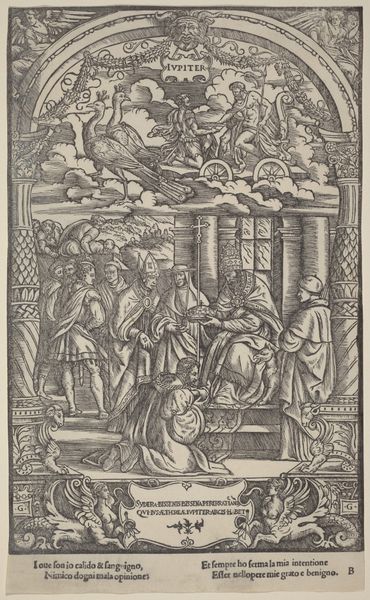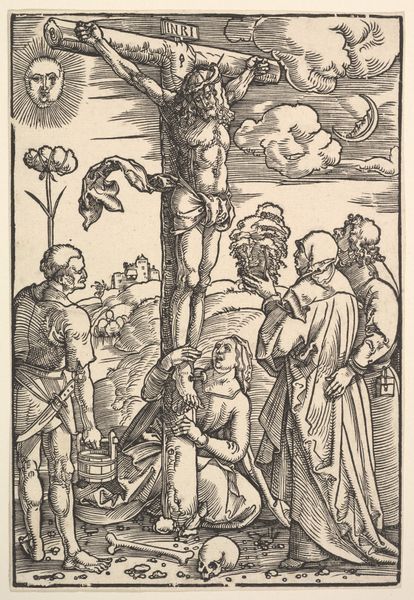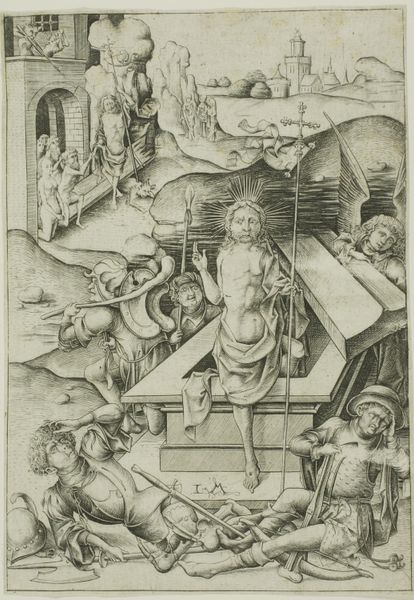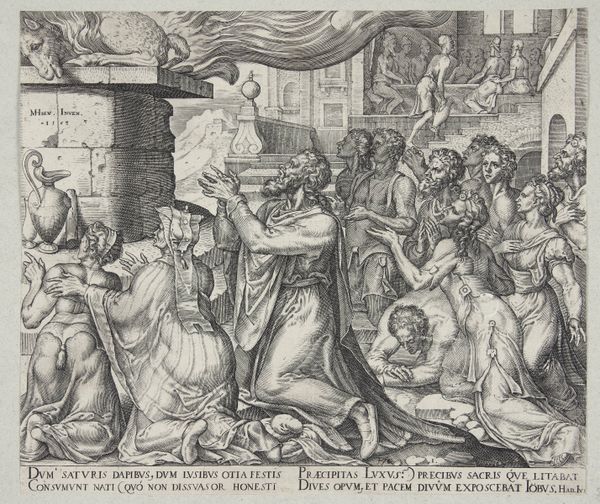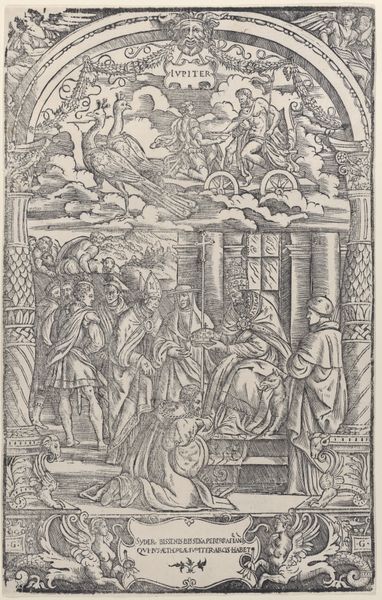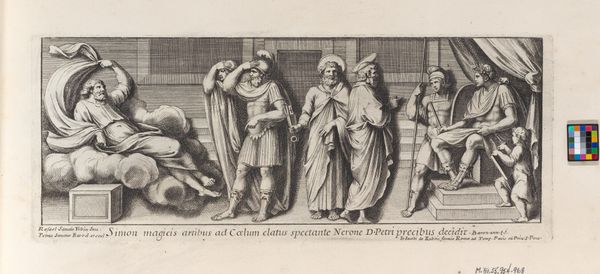
drawing, print, engraving
#
drawing
#
narrative-art
# print
#
figuration
#
history-painting
#
northern-renaissance
#
engraving
Dimensions: Plate: 8 3/4 × 11 9/16 in. (22.2 × 29.3 cm)
Copyright: Public Domain
Curator: Right, let's look closely at "Parable of the Good Shepherd," an engraving dating back to 1565. The piece is attributed to Philips Galle after Pieter Bruegel the Elder, offering a Northern Renaissance perspective on the biblical story, residing here at the Metropolitan Museum of Art. Editor: What strikes me is how…earthy it feels. The composition is so crammed, so full of determined figures. Almost violently busy except for this calm shepherd standing serenely in the center with his sheep, radiating…dare I say, grace. Curator: That crowded composition, typical of Bruegel, amplifies the narrative's core. See how intruders break into the sheepfold, hammering and climbing, while the Good Shepherd, Christ himself, offers an open gate. It's a contrast between forced entry and willing acceptance. Note also the Latin inscriptions framing the image which spell out the significance for contemporary viewers. Editor: So, it's about salvation versus…violation? It feels almost like a political statement too. Those aggressive figures almost feel like a mob – or even a pointed allusion to contemporaneous religious conflicts. This isn't your average gentle depiction of biblical themes. I'm getting this sense of an imminent and visceral threat in those chaotic actions all around the edge of the image. The artist has brilliantly created an extremely tense and unstable atmosphere! Curator: The imagery is multifaceted, certainly encompassing the religious anxieties of the time. Galle masterfully used line and contrast to highlight the tension. The good shepherd carrying a lamb embodies sacrifice and protection, offering refuge from earthly struggles. He stands serene amongst all that madness. Editor: I notice that each figure, even those attacking the enclosure, has real individual expression –they are no merely generic thugs. Even those working at the extremes of the composition seem focused on their own tasks. They have no unified aim it seems. It heightens the idea of blind destructive impulse and confusion doesn't it? This image almost suggests we could use a Good Shepherd today, as much as then! Curator: Exactly. These elements ensure that it continues to speak to us even now! A complex image of spiritual significance rooted in its historical moment. Editor: Indeed. Galle and Bruegel challenge us with timeless insight on faith, intrusion and what it really means to protect something that matters to you. Food for thought.
Comments
No comments
Be the first to comment and join the conversation on the ultimate creative platform.
